TLDR;
If your dog keeps biting his tail, it’s likely due to irritation from fleas, allergies, or anal gland issues—but it can also be linked to anxiety, compulsive behavior, or even neurological problems. Identifying the root cause early and addressing it—either at home or with a veterinarian—is crucial for your dog’s health and comfort.
Dog Keeps Chewing Tail: What You Need to Know Right Away

Tail biting is usually a symptom, not the problem itself. It signals that something is bothering your dog physically or emotionally—and ignoring it could lead to infection, pain, or even long-term behavioral issues. Some dogs may also lick their paws out of itch or stress, which can be another sign of discomfort.
If your dog keeps returning to bite, chew, or lick their tail, here’s what it could mean, how to tell the difference, and what steps to take.
Dog Tail Biting Reasons: Common Medical Causes
Let’s start with the physical triggers. These are some of the most frequent, treatable reasons dogs bite their tails.
1. Parasites (Fleas, Mites, Ticks, Tapeworms)
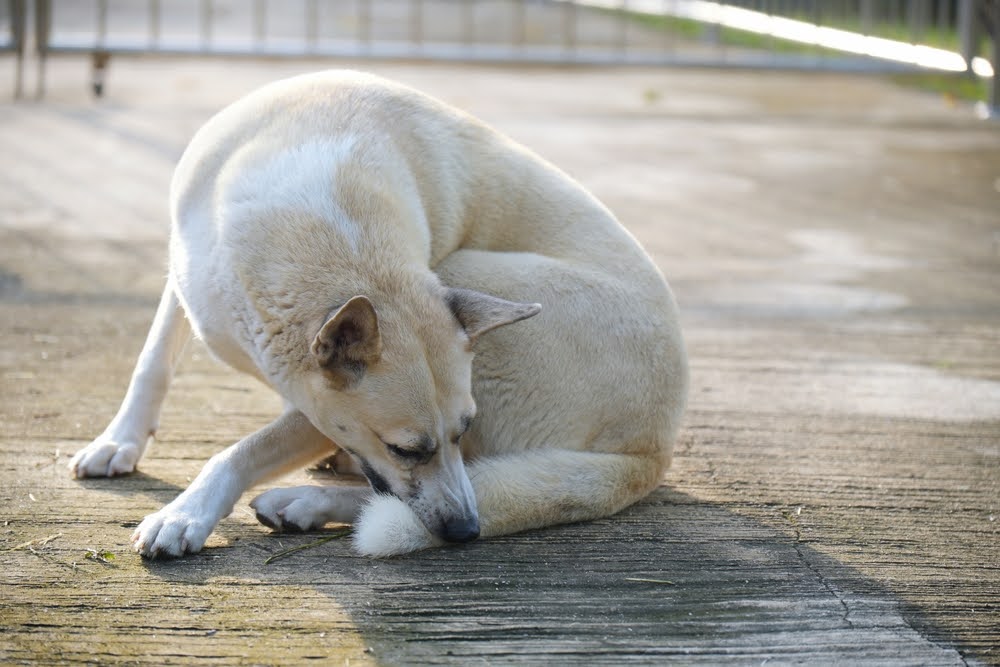
Why it happens:
Parasites cause intense itching, particularly at the base of the tail, making dogs chew or bite to relieve discomfort.
What to look for:
- Flea dirt (tiny black specks) or visible fleas
- Red, irritated skin at the tail base
- Excessive licking, chewing, or scratching in one area
- Tapeworms (white, rice-like segments near the anus)
Why it’s serious:
If untreated, parasite infestations can cause:
- Secondary skin infections
- Hot spots and open wounds
- Anal itching from tapeworms
What you should do:
- Administer monthly flea/tick preventatives
- Wash bedding, carpets, and upholstery
- See a vet for prescription-grade dewormers or anti-parasitic meds
2. Skin Allergies and Irritation
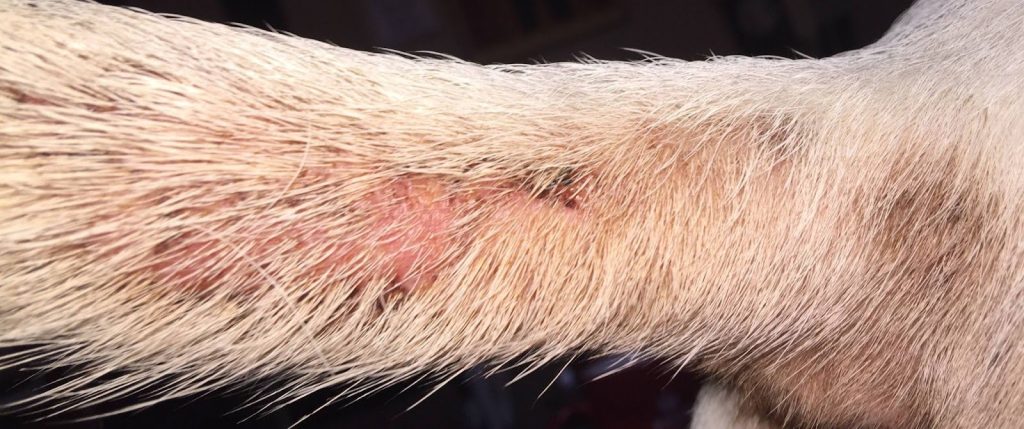
Why it happens:
Dogs can develop food allergies or environmental allergies (e.g., pollen, dust mites) that cause tail area itching and inflammation.
Types of allergies that can trigger tail biting:
- Flea Allergy Dermatitis (FAD): An extreme reaction to flea saliva.
- Food allergies: Often to proteins like beef, chicken, or dairy.
- Seasonal/environmental: Mold, grass, or pollen can flare up.
Symptoms include:
- Redness or inflammation on or near the tail
- Chronic itching across multiple body parts (ears, paws, belly)
- Secondary infections from excessive licking
How to treat it:
- Start an elimination diet (under vet supervision)
- Use vet-prescribed antihistamines or anti-itch treatments
- Consider allergy testing to pinpoint triggers
3. Anal Gland Issues in Dogs
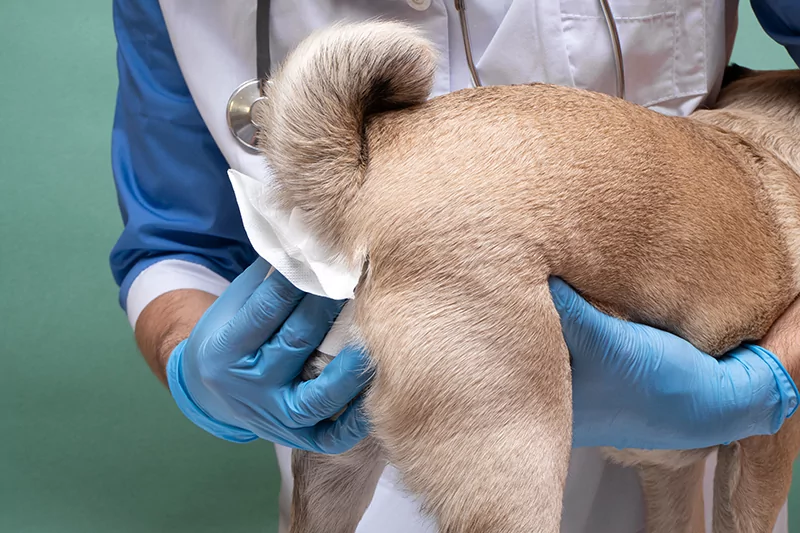
Why it happens:
Dogs have two anal glands that can become impacted or infected, causing pressure and discomfort that leads them to bite or chew near the tail.
Signs of anal gland problems:
- Scooting across the floor
- Swelling or redness around the anus
- A strong, fishy odor
- Biting or licking the base of the tail
Why it matters:
Untreated anal gland issues can lead to abscesses or require surgical draining.
How to manage it:
- Have a vet manually express the glands
- Increase dietary fiber (pumpkin, high-fiber dog food)
- Schedule regular checkups if your dog is prone to impaction
4. Skin Infections & Dermatitis

Why it happens:
Tail biting can both cause and result from bacterial or fungal skin infections.
Conditions that cause tail discomfort:
- Hot spots: Moist, inflamed skin from constant licking or chewing
- Yeast infections: Often smell musty and result from moisture buildup
- Pyoderma (bacterial infection): Causes crusty or weepy sores
Symptoms to note:
- Scabbing, flaking, or oozing sores
- Hair loss around tail base
- Odor from the affected area
Treatment methods:
- Use vet-prescribed medicated shampoos
- Apply topical creams (antibiotics or antifungals)
- Keep the tail area clean and dry
5. Dog Anxiety and Emotional Stress

Why it happens:
Dogs experience stress just like humans, and tail biting can be a coping mechanism.
Common stressors:
- Change in household (moving, new pets, baby)
- Owner absence (separation anxiety)
- Inconsistent routines or lack of structure
Behavioral signs:
- Restlessness or pacing
- Panting or whining for no reason
- Tail chewing when alone or at night
How to help:
- Stick to consistent feeding/walking schedules
- Use calming tools (pheromone diffusers, calming treats)
- Spend more interactive time with your dog
6. Canine Compulsive Disorders (CCD/OCD)
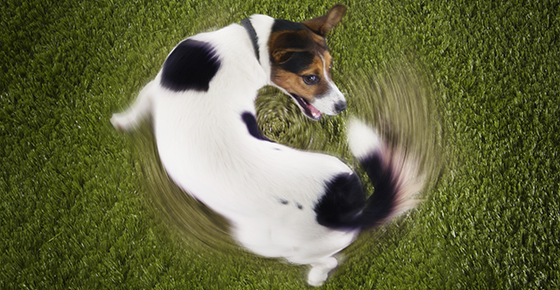
What it is:
When tail biting becomes obsessive, it may be classified as CCD—similar to OCD in humans.
How it develops:
- Starts as a response to physical irritation
- Becomes a learned, repetitive behavior
- May persist even after original cause is resolved
Signs it’s compulsive:
- Tail chasing, spinning, or biting for long periods
- Difficulty redirecting the dog’s attention
- Self-inflicted wounds or hair loss
Treatment options:
- Behavior modification training
- Anti-anxiety medications (under vet supervision)
- Increased exercise and stimulation
7. Neurological Disorders
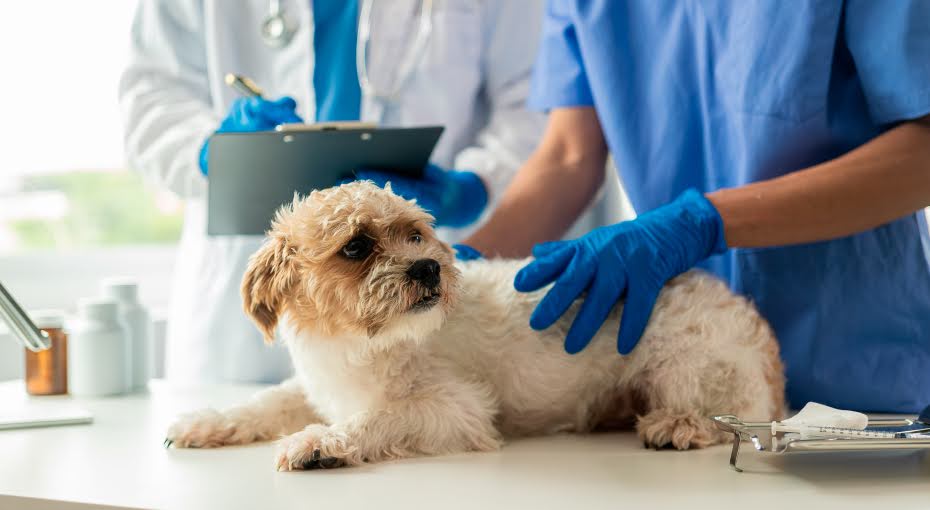
Why it happens:
Tail biting may signal nerve damage or neuropathic pain due to:
- Spinal injury or misalignment
- Compressed nerves
- Seizures or tremors
Symptoms include:
- Sudden tail chewing with no external signs
- Difficulty walking or weakness in hind legs
- Sensitivity when tail or back is touched
Diagnosis requires:
- X-rays or MRI
- Neurological exam
- Long-term pain management or surgery in severe cases
8. Hormonal Imbalances
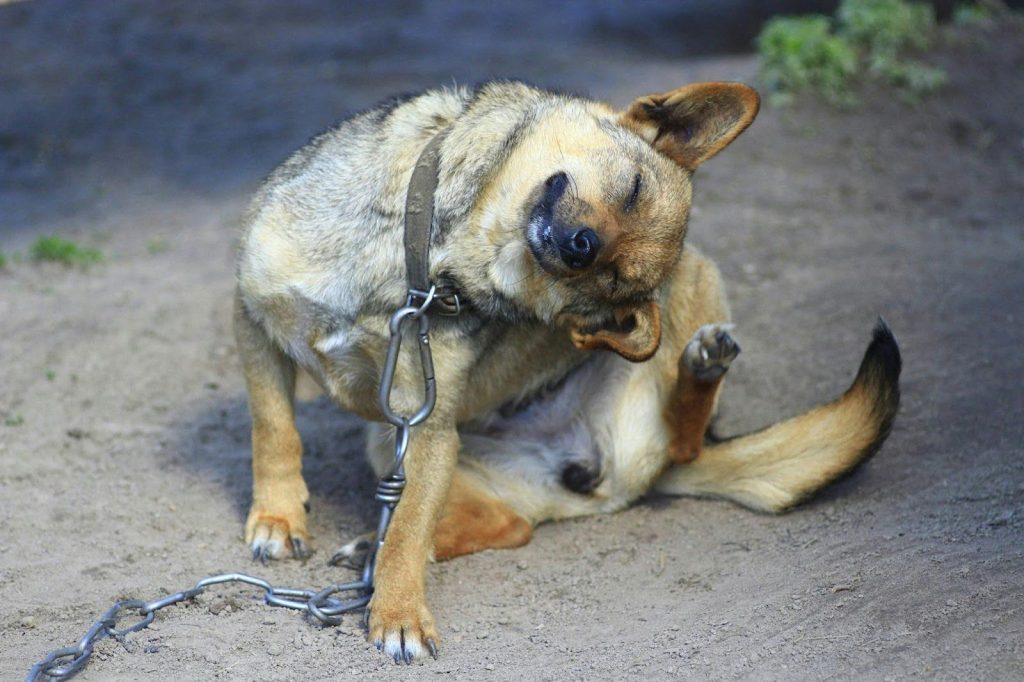
Conditions to consider:
- Hypothyroidism: Low thyroid hormones can cause itchy skin and behavioral shifts
- Cushing’s disease: Overproduction of cortisol, which may cause thinning skin and susceptibility to infections
Signs of hormonal imbalance:
- Lethargy
- Skin changes (dry, flaky, or greasy)
- Repetitive behavior or depression
Treatment:
Requires veterinary bloodwork, medication, and regular monitoring.
How to Tell Why Your Dog Is Biting Its Tail
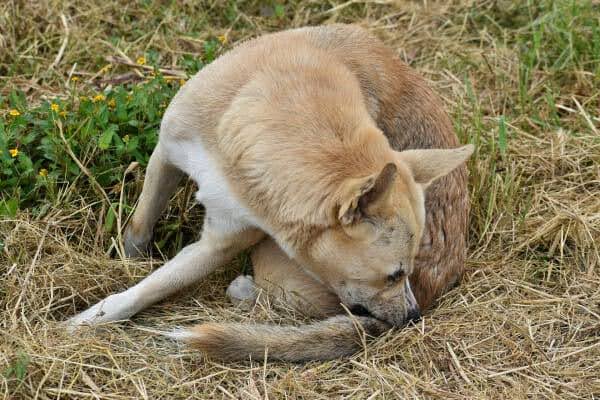
Before heading to the vet, you can do a little detective work:
Observation Checklist:
- Where is the dog biting? Tail tip? Base? Entire tail?
- When does it happen? All the time, or at specific times?
- Any visible signs? Fleas, redness, swelling, discharge?
- How severe is it? Mild nibbling or obsessive chewing with hair loss?
- Recent changes? Food, environment, stress triggers?
Tracking this behavior over a few days can help your vet diagnose faster and more accurately.
When Should I Worry About My Dog Biting Its Tail?
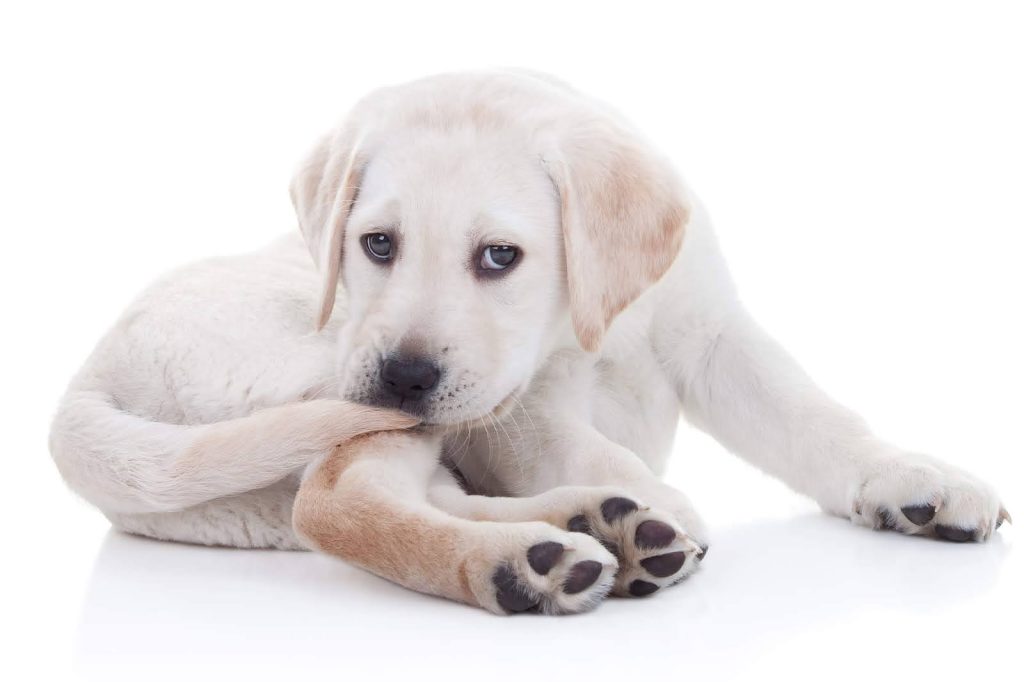
Tail biting becomes serious when:
- The skin is broken, bleeding, or infected
- Your dog can’t stop the behavior even when distracted
- There’s a noticeable odor (may signal infection)
- Biting starts suddenly and intensely without any prior history
In these cases, don’t delay. A vet visit is necessary.
Dog Itchy Tail: What Helps? Treatment Options Based on the Cause
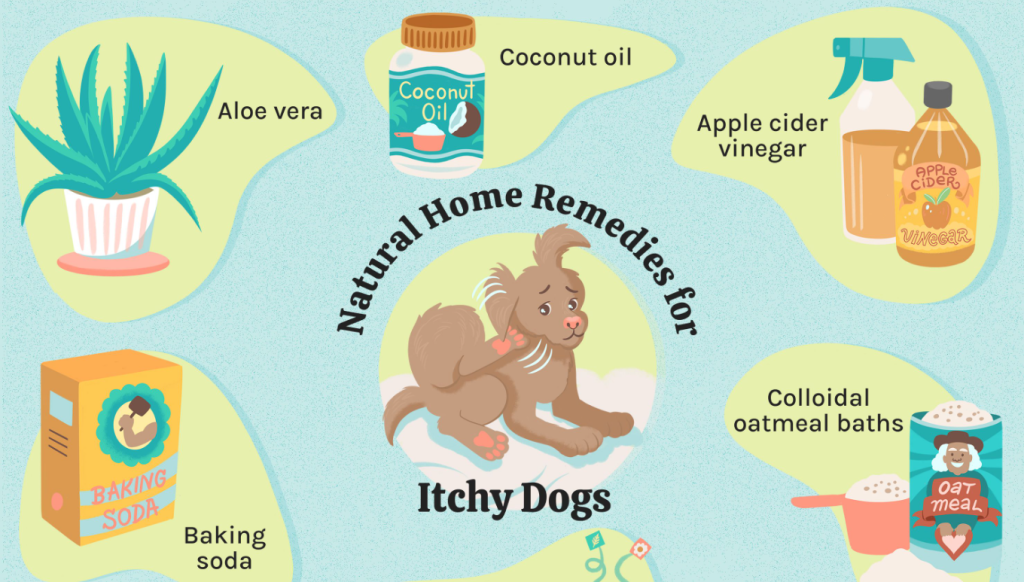
Medical Treatments
- Parasite prevention (monthly topical/oral medications)
- Allergy medications (antihistamines, corticosteroids)
- Infection control (antibiotics, antifungal treatments)
- Surgery for severe anal gland or neurological issues
Home Remedies (use only with vet approval)
- Oatmeal baths for calming itchy skin
- Aloe vera or coconut oil for mild skin issues
- Cold compress to relieve swelling or irritation
Behavioral and Environmental Solutions
- Provide puzzle toys and games
- Stick to a predictable routine
Use calming aids if needed (thunder shirts, calming music)
Prevent Dog from Biting Tail: Proactive Dog Care Tips
-
Monthly flea/tick protection
-
Regular grooming to keep skin and coat healthy
-
Annual vet checkups including bloodwork
-
Balanced diet with omega-3s for skin health
-
Daily play and mental stimulation
-
Socialization with other dogs and environments
-
Sometimes, dogs will scratch the carpet due to skin allergies or infections, so it’s important to monitor for signs of irritation or discomfort